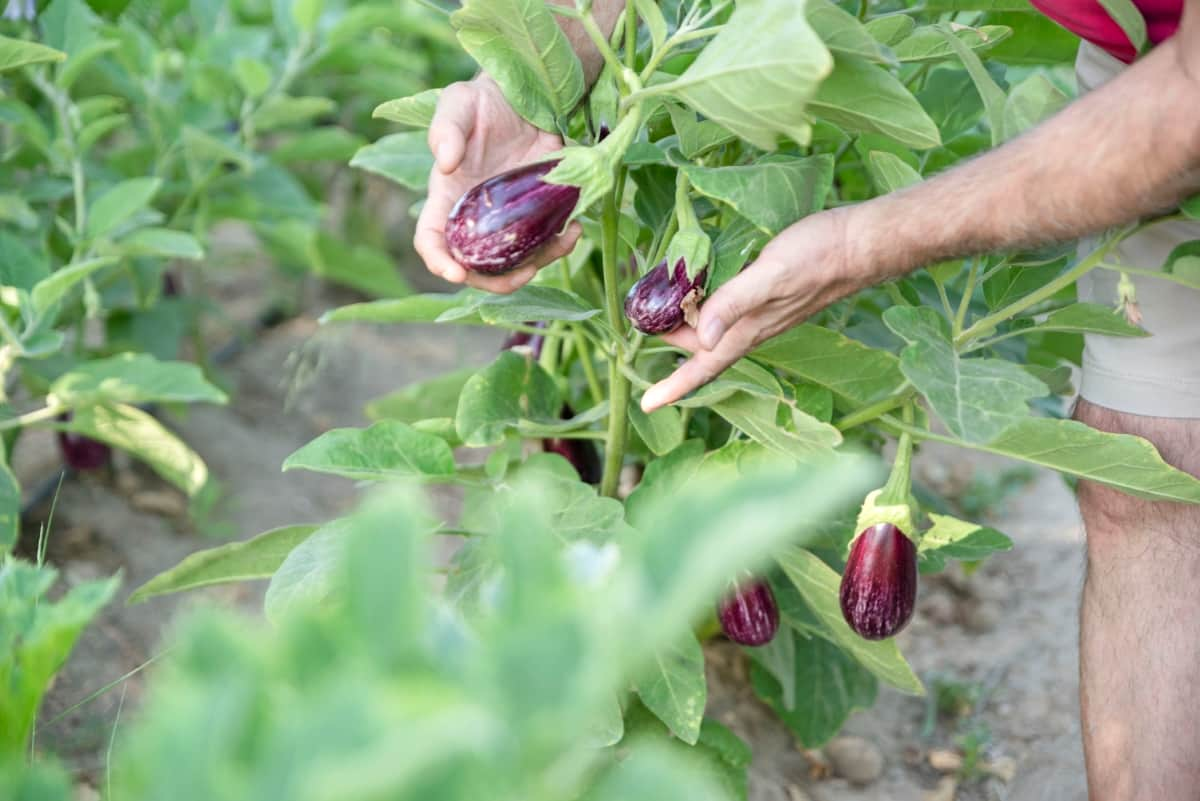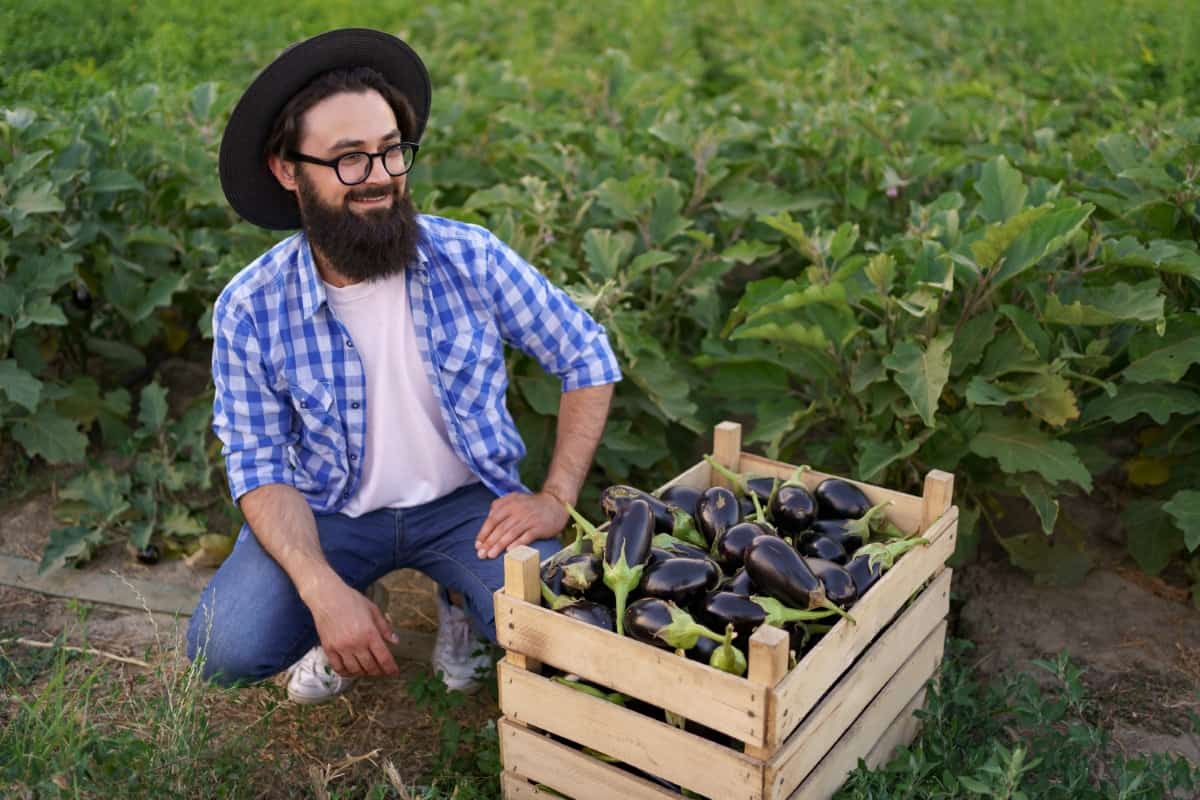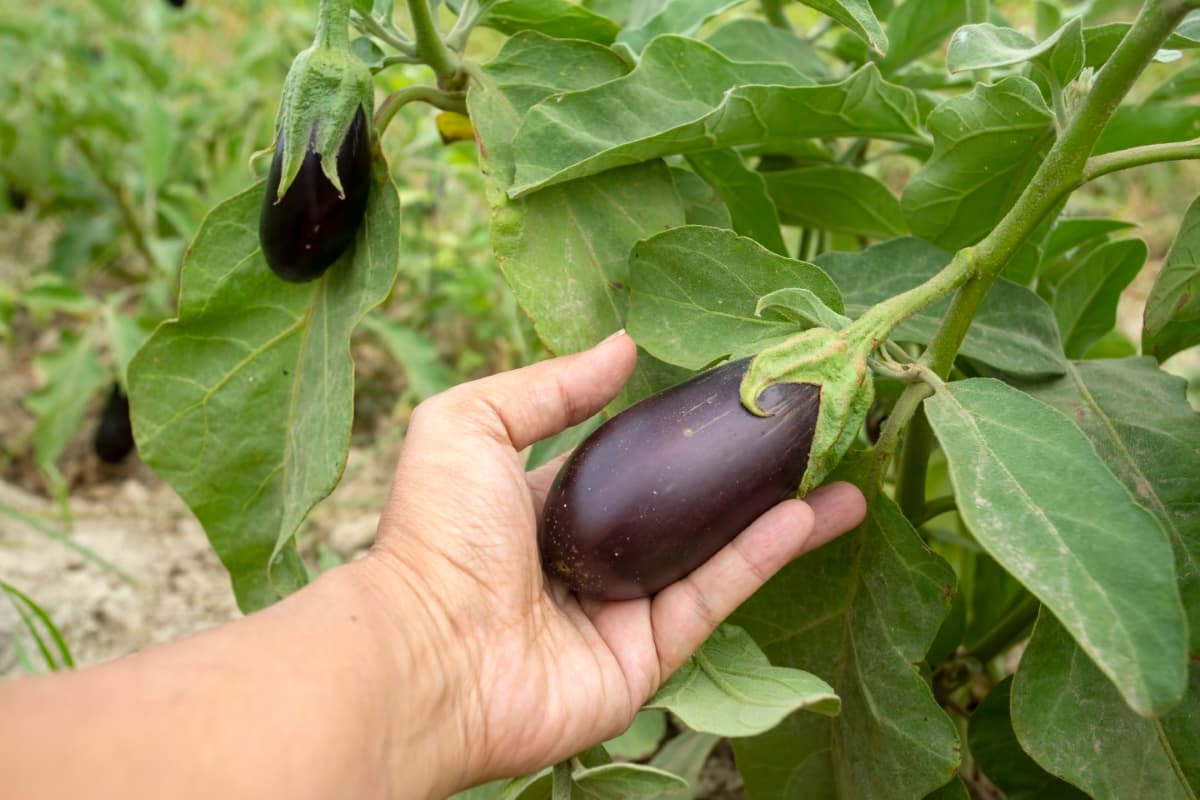Welcome to the comprehensive guide on Brinjal Disease Management. Brinjal, also known as eggplant, faces various diseases that threaten its health and yield. Common ailments include Early Blight, a fungal infection prevalent in humid conditions. Effective Brinjal Disease Control involves preventive measures such as crop rotation, proper sanitation, and resistant varieties selection.

For Brinjal Disease Treatment, fungicides and organic solutions are viable options. Management strategies encompass cultural practices and integrated pest management techniques. Early identification and quick action are critical for loss mitigation. Stay informed and proactive to safeguard your Brinjal crops and ensure bountiful yields.
Brinjal Disease Management
- Introduction to Brinjal Diseases: Brinjal, a staple in many cuisines, faces various challenges from prevalent diseases affecting its health and productivity.
- Common Diseases Affecting Brinjal: Brinjal is susceptible to several diseases, impacting its overall vitality. Notable among them are Early Blight, a fungal menace thriving in humid conditions; Bacterial Wilt, caused by Ralstonia solanacearum; and Fusarium Wilt, a soil-borne threat affecting root health.
- Impact on Crop Yield and Quality: These common brinjal diseases collectively pose a significant threat to crop yield and quality. Early Blight affects foliage, reducing photosynthesis, while Bacterial Wilt and Fusarium Wilt compromise root integrity, hindering nutrient uptake. Vigilant management is crucial for preserving Brinjal crops and ensuring optimal yield and quality.
Early Blight in Brinjal
Identifying Symptoms and Spread
The fungus Alternaria solani causes early blight and manifests as small, dark lesions on lower leaves, spreading upwards. Affected foliage may exhibit yellowing, wilting, and premature defoliation, impacting fruit quality and yield. Spores spread through splashing water and wind, thriving in warm, humid conditions.
Effective Management Strategies
Implementing Brinjal Disease Control measures like crop rotation, proper sanitation, and resistant cultivars can mitigate Early Blight. Regular pruning of infected foliage, application of fungicides, and organic treatments bolster Brinjal Disease Treatment efforts. Integrated Brinjal Disease Management strategies, including mulching and adequate spacing, foster healthier plants and reduce disease pressure.
Verticillium Wilt in Brinjal
Causative Agent and Disease Progression
Verticillium wilt in Brinjal is caused by the soil-borne fungus Verticillium dahliae, which invades the plant’s vascular system, obstructing water and nutrient flow, leading to wilting, yellowing leaves and eventual plant death. It thrives in warm soil and spreads through infected debris and contaminated soil.
Prevention and Control Measures
Verticillium Wilt Brinjal Treatment consists of preventive measures such as crop rotation with non-susceptible crops, the use of resistant Brinjal varieties, and soil solarization. Regular sanitation and removal of infected plants are also essential. Fungicides may offer limited control in severe cases.
Bacterial Wilt in Brinjal
Pathogen Description and Impact
Bacterial wilt, caused by the bacterium Rastonia solanacearum, is a major threat to Brinjal cultivation worldwide. It attacks the vascular system, causing wilting, yellowing, and plant death. The pathogen thrives in warm, humid conditions, spreading rapidly through contaminated soil and water, causing significant yield losses.
Integrated Disease Management Approaches
Integrated disease management strategies include soil solarization, crop rotation, using resistant cultivars, biocontrol agents, and strict sanitation measures. Early detection and timely action are critical for avoiding severe outbreaks.
Fusarium Wilt
- Disease Symptoms and Lifecycle: The fungus Fusarium oxysporum causes wilting, yellowing, and eventual death of susceptible plants. The pathogen resides in soil, surviving long periods without a host. It invades plants through roots, obstructing water flow and causing vascular damage, leading to wilt symptoms.
- Cultural and Chemical Control Options: Effective control of Fusarium Wilt involves crop rotation, soil solarization, and planting resistant varieties. Chemical options like fungicides may offer supplemental protection, but integrated management practices remain crucial for sustained control and prevention of Fusarium Wilt outbreaks.
In case you missed it: Eggplant Farming Project Report: Brinjal Cost and Profit Economics for 1-Acre Cultivation

- Damping-Off in Seedlings: Damping-off poses a significant threat to seedling health, especially in susceptible crops like Brinjal.
- Early Detection and Management: Early detection and handling are critical for preventing widespread losses. Promptly remove infected seedlings and improve drainage to deter fungal growth. Employ sterilized soil and containers to mitigate risks.
- Preventive Measures in Nurseries: Implement proactive techniques in nurseries to control Damping-off and other pests such as Brinjal Root-Knot Nematode. Utilize well-draining soil, adequate spacing, and proper ventilation to minimize fungal proliferation. Regular monitoring and sanitation routines are essential to maintain a healthy seedling environment.
Powdery Mildew and Its Management
Symptoms and Disease Development
Powdery Mildew manifests as white powdery patches on Brinjal leaves, stunting growth and reducing yield. High humidity and moderate temperatures favor its spread. Regular monitoring is crucial to catching early signs and preventing severe infestations. Incorporating resistant varieties and practicing proper spacing helps mitigate the spread of the disease.
Chemical and Biological Control Methods
Chemical fungicides like sulfur and potassium bicarbonate effectively combat Powdery Mildew. Biological control agents such as Bacillus subtilis offer eco-friendly alternatives, reducing reliance on synthetic chemicals and promoting sustainable agriculture practices.
Root-Knot Nematodes
Identification and Effects on Brinjal
Brinjal Root-Knot Nematode, a microscopic menace, inflicts significant harm to eggplant crops. These nematodes, characterized by swollen root knots, impede water and nutrient uptake, stunting plant growth. Yellowing leaves and wilting are telltale signs of infestation. Yield reduction and compromised plant health are common consequences.
Nematode Management Strategies
Combatting Brinjal Root-Knot Nematodes necessitates integrated approaches. Crop rotation with non-host plants disrupts nematode life cycles. Soil solarization, organic amendments, and biocontrol agents like beneficial nematodes offer sustainable solutions. Vigilance and proactive measures are paramount to mitigate nematode damage and preserve Brinjal yields.
Leaf Spot Diseases
Leaf Spot diseases affect various plants, including brinjals, presenting distinct symptoms and challenges.
Types of Leaf Spot and Their Symptoms
Leaf Spot disease in brinjals manifests as circular or irregular lesions on foliage, often surrounded by a halo. Bacterial Wilt in eggplant causes wilting and yellowing of leaves, leading to eventual plant death. Fusarium Wilt in brinjal exhibits yellowing and wilting of lower leaves. Brinjal Damping-off Control involves proper drainage and seed treatment. Powdery Mildew in eggplant results in powdery white patches on leaves, affecting photosynthesis.
Integrated Control Techniques
Integrated pest management integrates cultural practices, resistant varieties, and organic fungicides to combat Leaf Spot effectively. Regular monitoring and early intervention are vital for minimizing Leaf Spot damage and preserving plant health.
In case you missed it: How to Grow Long Green/Violet Brinjal at Home: A Step-by-Step Process

Mosaic Virus in Brinjal
Virus Transmission and Plant Symptoms
Mosaic Virus in Eggplant spreads through aphids and contaminated tools, causing mosaic patterns on leaves and stunted growth. Leaves display yellowing, puckering, and distortion, compromising plant vigor. Aphid control and the use of virus-free seedlings are essential prevention measures. Regular scouting helps identify infected plants early, preventing further spread.
Management and Prevention Practices
Implementing crop rotation, removing infected plants, and controlling aphid populations are vital management strategies. Utilizing resistant varieties and applying neem oil can reduce virus incidence. Timely actions and strict sanitation practices minimize the Mosaic Virus impact on Brinjal crops, ensuring healthier yields.
In case you missed it: Barbarella Brinjal Farming: A Step-By-Step Guide for Seed to Harvest

Conclusion
Effective Brinjal Disease Management is crucial for crop health and yields. Proactive strategies like crop rotation, sanitation, and integrated pest management can mitigate diseases like Early Blight, Verticillium Wilt, Bacterial Wilt, and Fusarium Wilt, ensuring crop vitality and abundant harvests.
- Feed Your Flock for Less: Top 10 Tips to Save on Chicken Feed
- Ultimate Guide to Ossabaw Island Hog: Breeding, Raising, Diet, and Care
- Hatching Answers: The Top 10 Reasons Your Chickens Aren’t Laying Eggs
- Eggs and Economics: Breaking Down the Cost of Raising Backyard Chickens
- Defend Your Greens: Proven Methods to Keep Iguanas Out of Your Garden
- Ultimate Guide to Cinnamon Queen Chicken: A Comprehensive Guide for Beginners
- Ultimate Guide to California Tan Chicken: Breeding, Raising, Diet, Egg-Production and Care
- Ultimate Guide to Marsh Daisy Chicken: Breeding, Raising, Diet, and Care
- 10 Types of Chicken Farming Businesses You Can Start for Profits